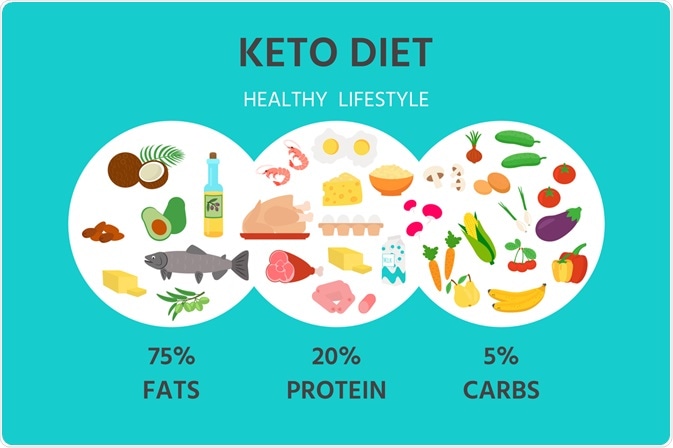Last Updated on November 6, 2024 by Luke
Introduction
The ketogenic diet, commonly known as the keto diet, has gained a reputation for quick weight loss, enhanced mental clarity, and sustained energy levels. For weightlifters and bodybuilders, however, it’s essential to understand how following a ketogenic diet aligns (or clashes) with their fitness goals, especially if those goals include building muscle, increasing muscle mass, and improving strength. In this article, we’ll explore the pros and cons of a ketogenic diet for weightlifters and bodybuilders and share practical tips for those interested in trying it as a way to build muscle on the keto diet.
What Is the Ketogenic Diet?
The ketogenic diet involves drastically cutting carbohydrates (typically below 50 grams per day) and increasing fat intake to around 70–75% of daily calories. This type of diet shifts the body’s metabolism into a metabolic state called ketosis, where it starts burning fat instead of glucose (from carbs) as its primary fuel source. While glucose normally powers high-intensity exercises, in ketosis, the liver converts stored fats into molecules called ketones, which serve as an alternative energy source for the brain and muscle tissue.

Typical keto meals focus on high-fat, low-carb ingredients like eggs, fatty cuts of meat, cheese, oils, butter, and low-carb vegetables. For weightlifters and bodybuilders used to relying on carbs for strength and explosive power, this switch to a high-fat diet can be a big shift. Many bodybuilders use carbohydrates to fuel their workouts and support muscle growth, so transitioning to a low-carbohydrate diet requires careful planning to maintain lean body mass and performance.
Pros of a Ketogenic Diet for Weightlifters
Enhanced Fat Loss
Since the keto diet pushes the body into fat-burning mode, many people experience faster fat loss compared to traditional diets. For weightlifters and bodybuilders, this can be an efficient way to cut body fat without losing lean muscle, especially during a “cutting” phase when the goal is to maintain muscle definition and improve body composition.

Because fat is being burned for fuel instead of carbs, the ketogenic diet can also reduce insulin spikes, which may help in managing fat storage and ultimately contribute to a leaner physique. Using ketones as fuel can help the body to use stored fat more efficiently.
Appetite Control
One of the most praised aspects of the keto diet is its effect on appetite control. Ketones have been shown to reduce ghrelin, the “hunger hormone,” which can help people on a calorie deficit stick to their diet without constant hunger pangs.
For weightlifters, this is a plus, as appetite control makes it easier to manage calorie and protein intake during a cutting phase or when preparing for competition. The combination of high-fat meals and lower insulin levels can keep hunger in check for longer, reducing the need for frequent snacking.
Improved Endurance in Steady-State Exercise
Once adapted to keto, many people report steady energy levels and improved endurance during prolonged, low-intensity workouts. Although not directly beneficial for explosive lifts, this energy stability can be a plus for long cardio sessions or endurance-based weightlifting routines.

Endurance athletes and some weightlifters find that keto reduces the “bonking” effect, or sudden drops in energy, that can happen when glucose levels dip too low during prolonged exercise. While this may not be ideal for high-intensity lifting, those who incorporate steady-state cardio may find it beneficial.
Muscle Preservation During Calorie Deficits
Some studies suggest that keto has a muscle-sparing effect, helping to preserve muscle mass and lean body mass while in a calorie deficit. When in ketosis, the body uses fat as its primary energy source, sparing muscle protein from being broken down as a backup energy supply.

For weightlifters focused on fat loss without sacrificing muscle, this can be advantageous. However, it’s still essential to maintain adequate protein intake and manage workout intensity to prevent muscle loss.
Cons of a Ketogenic Diet for Weightlifters
Reduced Muscle Glycogen Levels
For weightlifting and other high-intensity activities, muscle glycogen—carbs stored in the muscles—is a primary fuel source. Since the ketogenic diet severely restricts carb intake, glycogen stores in the muscles tend to be lower. This lack of glycogen can directly impact performance, as there’s less readily available energy to fuel intense, explosive movements.
Weightlifters might experience a noticeable decrease in power and endurance, especially during high-rep sets or demanding compound exercises like deadlifts and squats. While some athletes adapt over time and regain strength, others may feel limited without carbs as a consistent fuel source.
Initial Drop in Performance
During the transition to ketosis, also known as the keto-adaptation phase, many people report a “keto flu” marked by fatigue, brain fog, headaches, and decreased physical performance. This adaptation phase can last anywhere from a few days to a few weeks, depending on the individual and their previous carb intake.

For weightlifters training on a keto diet, this period can be frustrating, as workouts may feel significantly harder. Patience and a gradual adaptation period can help, but anyone considering keto should be prepared for this initial performance dip.
Risk of Nutrient Deficiencies
Because keto restricts many carb-rich foods, it can lead to a deficiency in vitamins and minerals typically obtained from grains, fruits, and legumes. Nutrients like potassium, magnesium, and fiber can be harder to come by on keto, which is a concern for muscle recovery and overall health.
Weightlifters on a low-carbohydrate diet need to be particularly mindful of electrolyte levels, as low-carb diets increase water and electrolyte loss. Consistent attention to supplementation and nutrient-dense food choices is essential to avoid muscle cramps and poor recovery.
Potential for Muscle Loss
Although keto is muscle-sparing to a degree, the lack of carbs and the challenges in maintaining an adequate calorie surplus can impair muscle growth. Weightlifters focused on hypertrophy or bulking may find it difficult to gain muscle on a keto diet, as adequate protein and calories are crucial for growth.
Since the ketogenic diet restricts protein to moderate levels to maintain ketosis, some may not consume enough to stimulate optimal muscle protein synthesis. Those prioritizing muscle gains might be better served by a higher-carb diet or a high-protein diet.
Can You Build Muscle on a Keto Diet?
Many wonder if building muscle on a keto diet is feasible. It’s possible to build muscle on keto, but it may require more strategic planning compared to a traditional Western diet. Since carbs are limited, your body relies on fats and ketones for energy. Ensuring sufficient protein intake and engaging in regular resistance training are critical components to gain muscle mass while in ketosis.
The Impact on Lean Mass
Maintaining lean mass is important for both performance and aesthetics. The ketogenic diet can help reduce body fat while preserving lean mass, but careful attention to diet and training is required. Strategies to reduce muscle protein breakdown include adequate protein intake and proper training.
Keto Bodybuilding: Is It Right for You?
Keto bodybuilding is a growing trend, but it’s not without challenges. Assess whether this approach aligns with your goals and whether you’re willing to make the necessary dietary and training adjustments. Many bodybuilders have successfully adopted keto, but it requires commitment.
Tips for Weightlifting on a Keto Diet
Prioritize Protein Intake
To support muscle repair and recovery, it’s essential to hit your protein targets, even on a keto diet. Quality sources like fatty fish, eggs, and poultry are ideal. Although keto is typically moderate in protein, weightlifters may benefit from increasing protein intake to support muscle maintenance.

Aim for an appropriate amount of protein per pound of body weight to support muscle recovery and growth. Grams of protein per kilogram of body weight can also be a useful metric. Space out protein intake evenly across meals to maximize muscle protein synthesis and avoid large spikes, which could temporarily knock the body out of ketosis.
Experiment with Cyclical or Targeted Keto
If you’re struggling with energy during workouts, consider a cyclical ketogenic or targeted ketogenic approach. A cyclical keto diet involves eating carbs periodically (e.g., once a week) to replenish glycogen stores. Targeted keto involves consuming a small amount of fast-digesting carbs shortly before a workout for an energy boost.

These approaches allow weightlifters trying to build muscle to benefit from glycogen during training sessions without abandoning the overall ketogenic lifestyle. Many athletes use this strategy to balance performance and the metabolic benefits of keto.
Stay Hydrated and Mind Your Electrolytes
Since keto causes increased water and electrolyte loss, it’s crucial to drink plenty of water and supplement with electrolytes, especially sodium, potassium, and magnesium. Dehydration and electrolyte imbalances can lead to muscle cramps, fatigue, and poor recovery.
Aim to drink regularly and include foods like leafy greens, nuts, seeds, and avocados for natural electrolyte sources. Many on keto find that adding a pinch of salt to their water helps maintain sodium levels, especially during high-intensity workouts.
Incorporate Resistance Training
Engaging in regular resistance training is vital for those on a ketogenic diet who wish to build muscle or maintain muscle mass. Resistance training typically involves lifting weights or using resistance bands to stimulate muscle tissue growth.

Combining resistance training with adequate protein intake can help you gain muscle mass even while following a low-carb diet. Be sure to adjust your training program as needed based on your energy levels and recovery capacity.
Monitor Your Carb Intake Carefully
While on a ketogenic diet, it’s essential to monitor your carb intake to stay in ketosis. However, if your goal is to build muscle, you might need to adjust your carb consumption slightly, especially around workout times.
Some weightlifters find that a small increase in carbs does not significantly affect their ketone levels but does improve performance. Experimenting within the limits of your diet can help you find the right balance.
Avoid Common Keto Mistakes
Some keto dieters make mistakes that can hinder their progress, such as not consuming enough protein, neglecting electrolyte balance, or not allowing enough time for adaptation. Avoiding these keto mistakes can help you maximize your results. For instance, not consuming enough amino acids can reduce muscle protein synthesis and hinder muscle gain.
Ergänzungen in Betracht ziehen
Incorporating supplements like branched-chain amino acids can support muscle recovery and growth. Additionally, exogenous ketones and certain vitamins may aid in maintaining ketone levels and overall health on a ketogenic diet. These best keto supplements can help you achieve better results and may help you build muscle more effectively.

Sample Keto Meal Plan for Bodybuilders
Creating a complete meal plan that includes adequate protein and healthy fats is essential. A typical meal might include a fatty cut of meat with a side of low-carb vegetables sautéed in olive oil. This ensures you get the necessary nutrients to support muscle recovery and growth. Including foods rich in essential amino acids can boost muscle protein synthesis.
Example Meal Plan
- Frühstück: Scrambled eggs with spinach and cheese cooked in butter.
- Mittagessen: Grilled salmon with avocado salad and olive oil dressing.
- Abendessen: Ribeye steak with asparagus sautéed in coconut oil.
- Snacks: Almonds, keto-friendly protein shakes, or cheese slices.
This meal plan focuses on high-quality proteins and fats, providing the necessary nutrients for muscle recovery and growth while keeping carb intake low.
Comparing Keto to Conventional Diets
A conventional diet often includes higher amounts of carbohydrates, which are beneficial for muscle growth and performance. Comparing keto to a conventional diet helps you understand whether the diet works for your specific needs. While a higher-carb diet might support more intense training sessions, a ketogenic diet offers other benefits like improved fat loss and energy levels.
The Role of High-Protein Diets
While the ketogenic diet is typically moderate in protein, some weightlifters might consider a high-protein diet to support muscle building. However, consuming too much protein can potentially kick you out of ketosis, as excess protein can be converted into glucose through gluconeogenesis. Balancing your protein intake is crucial to avoid compromising ketosis while still promoting muscle growth.
Training on a Keto Diet
Adapting your training program when on a ketogenic diet is essential. Incorporating strength training and lifting weights can help you build muscle on keto. Be prepared to adjust your workout intensity and volume based on your energy levels.
Endurance vs. High-Intensity Training
While the ketogenic diet may enhance performance in endurance activities, it might not be as beneficial for high-intensity, anaerobic exercises that rely heavily on glucose. Understanding how your body responds can help you tailor your training accordingly.

Monitoring Ketone Levels
Keeping an eye on your ketone levels can help you understand how well you’re adapting to the diet. When you’re in ketosis, your body efficiently uses ketones for energy, which can impact your performance and muscle-building efforts.
Fazit
The ketogenic diet offers a range of benefits for weightlifters and bodybuilders, including enhanced fat loss, appetite control, and muscle preservation during cutting phases. However, it’s not without its downsides, particularly in terms of reduced muscle glycogen, potential nutrient deficiencies, and the possibility of hampering muscle gains.
For those dedicated to a keto lifestyle, strategies like carb cycling, prioritizing protein, and maintaining hydration can help optimize results. With careful planning and attention to nutrient intake, it’s possible to build muscle on keto, but it requires dedication and possibly adapting your training program. Ultimately, each weightlifter must weigh the pros and cons of keto based on their unique goals and be open to adjusting their diet to support their fitness journey.







